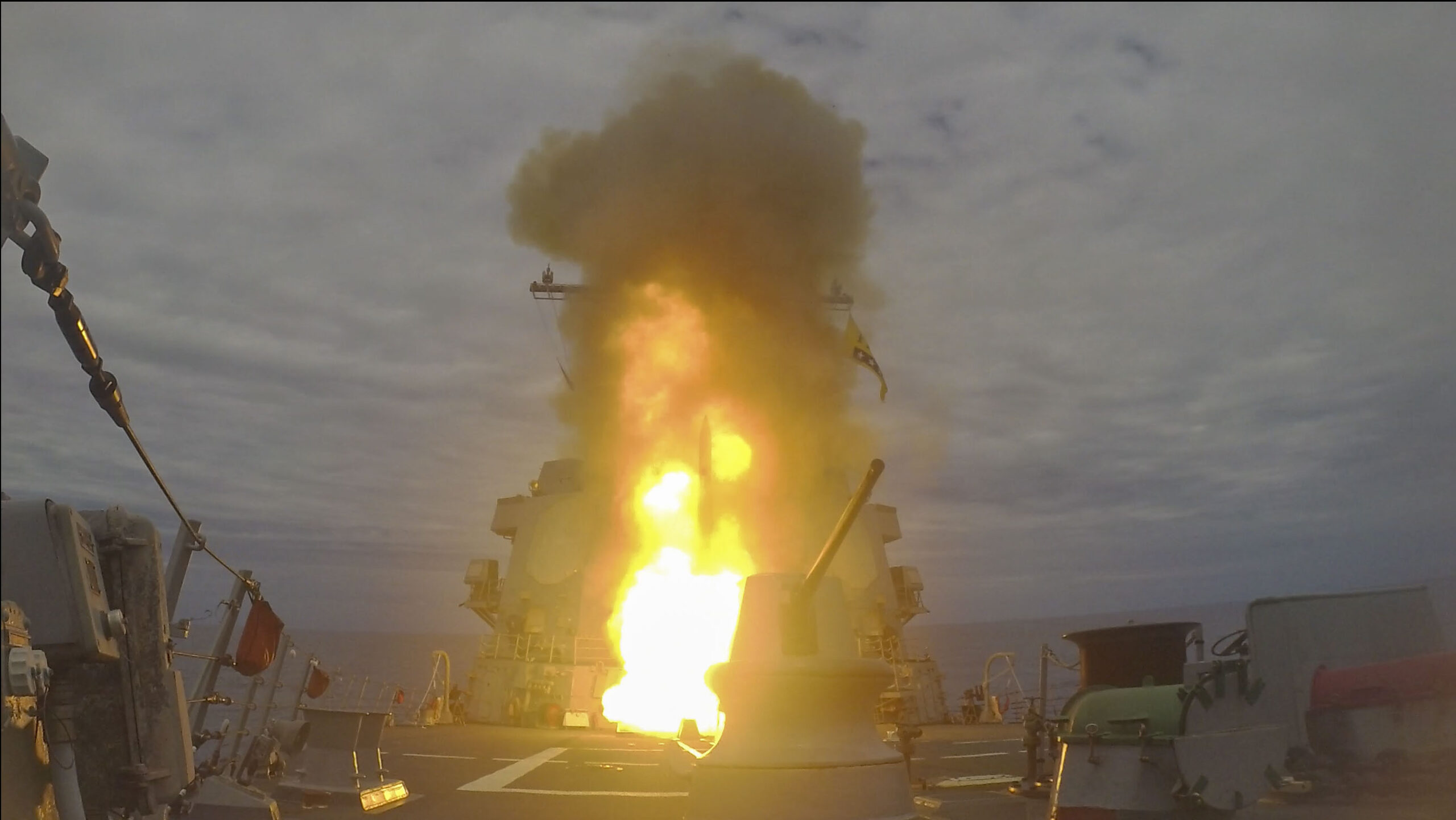
A trio of United States destroyers staged a show of force in the Western Pacific Ocean by launching missiles to enhance their warfighting capabilities amid the Chinese naval buildup.
The U.S. Seventh Fleet will continue to work with allies and partners to deter aggression and preserve a secure and prosperous Indo-Pacific, a spokesperson for the Fleet told Newsweek.
The Chinese Defense Ministry did not immediately respond to a request for comment.
Why It Matters
The U.S. has stationed warships such as aircraft carriers, destroyers, and submarines in the Western Pacific Ocean. The Seventh Fleet, the largest forward-deployed fleet of the U.S. Navy, maintains a “continuous forward presence” in the Western Pacific and Indian Oceans.
The Seventh Fleet claimed that there are 50 to 70 ships and submarines, 150 aircraft, and more than 27,000 sailors and marines within the fleet’s area of operations at any given time.
China has the largest navy in the world by hull count, with over 370 vessels. The Chinese military is expanding its naval fleet, as well as its reach and presence, seeking to challenge America’s naval dominance within and beyond the Western Pacific Ocean.
Mass Communication Specialist 1st Class Devin Monroe/U.S. Navy
What To Know
According to photos and videos released by the U.S. Navy, destroyers USS Benfold, USS Shoup, and USS Dewey were seen firing a total of three Standard Missile-2 surface-to-air defense missiles during a tactical training exercise in the Philippine Sea from April 24 to 25.

Ensign Sawyer Blazar/U.S. Navy
The Philippine Sea is between the First and Second Island Chains, which are part of a U.S. containment strategy that seeks to restrict the Chinese military’s access to the Pacific Ocean. The U.S. and China have recently sent their aircraft carriers to the Philippine Sea.
These destroyers, which are of the Arleigh Burke-class, provide multi-mission offensive and defensive capabilities, the U.S. Navy said. The Standard Missile-2 defends against anti-ship threats out to 90 nautical miles [103 miles], according to defense contractor Raytheon.
The Japan Maritime Self-Defense Force said the event, which took place from April 7 to 25 and included the Japanese destroyer JS Ashigara, featured antiair, anti-submarine, anti-surface, and electronic warfare, as well as antiair missile drills and replenishment at sea.
This bilateral exercise aimed at improving the Japanese navy’s tactical capabilities and the interoperability with the U.S. Navy, as well as strengthening the capability of the U.S.-Japan alliance for “effective deterrence and response,” the Japan Maritime Self-Defense Force said.
The employment of surface-to-air defense missiles in the exercise comes as U.S. naval ships operating near Yemen became the targets of the Iranian-backed Houthi group. The U.S. has stationed a pair of aircraft carriers in the region, which are protected by escorting destroyers.
What People Are Saying
The U.S. Seventh Fleet told Newsweek: “The mission of the U.S. [Seventh] Fleet is to provide operational control and planning for its forces in the Western Pacific and Indian Oceans, while promoting regional stability and maritime security through engagements with allies and partners.”
U.S. defense contractor Raytheon said: “The [Standard Missile-2] missile is a cornerstone of a ship’s layered defense. It provides firepower against high-speed, highly maneuverable anti-ship missiles and aircraft and protects naval assets that give warfighters greater operational flexibility.”
What Happens Next
It remains to be seen whether USS Preble, a Japan-based U.S. destroyer, will carry out any exercises with its high-energy laser weapon to destroy fast attack craft and drones in the Western Pacific Ocean.
